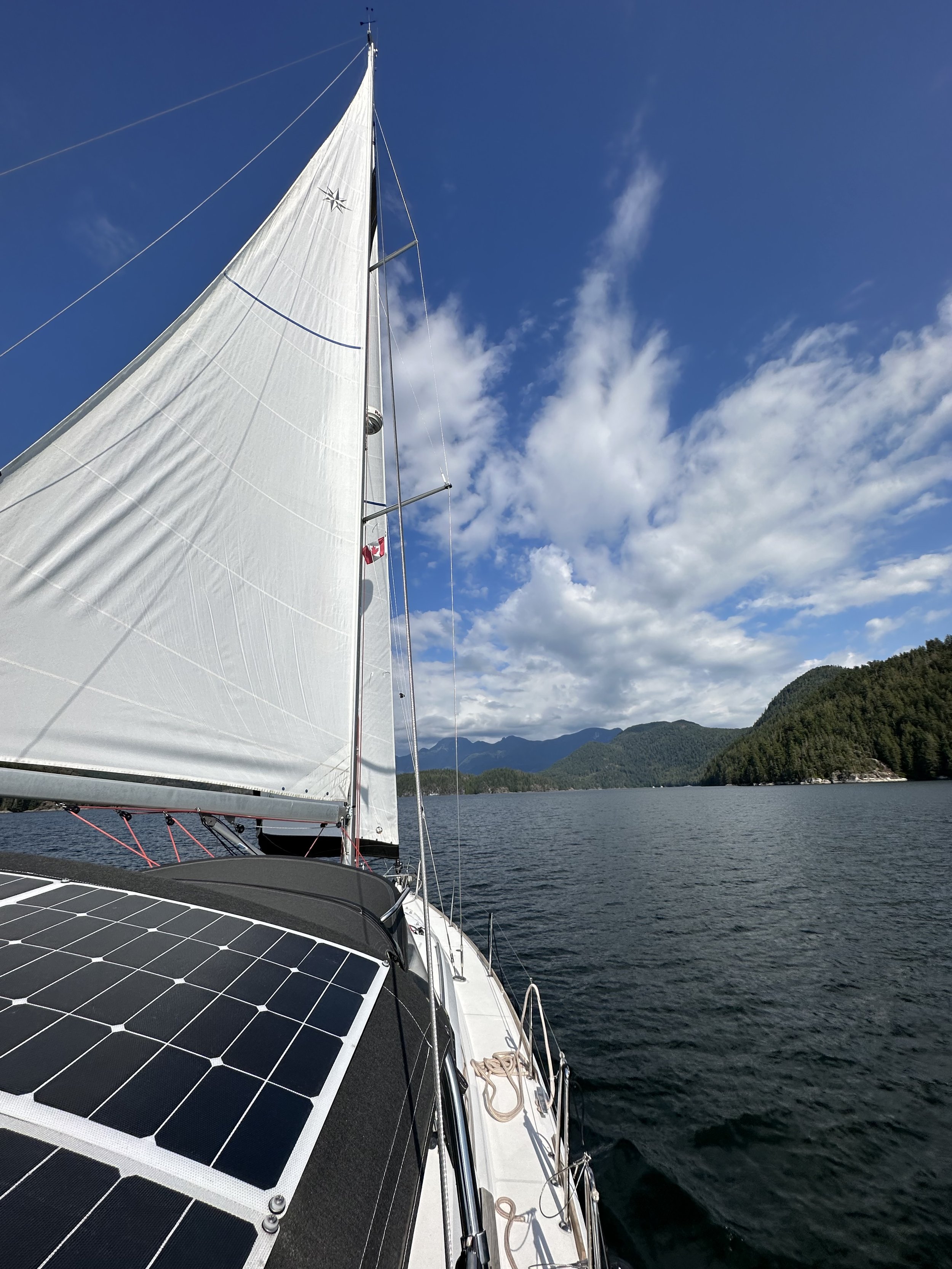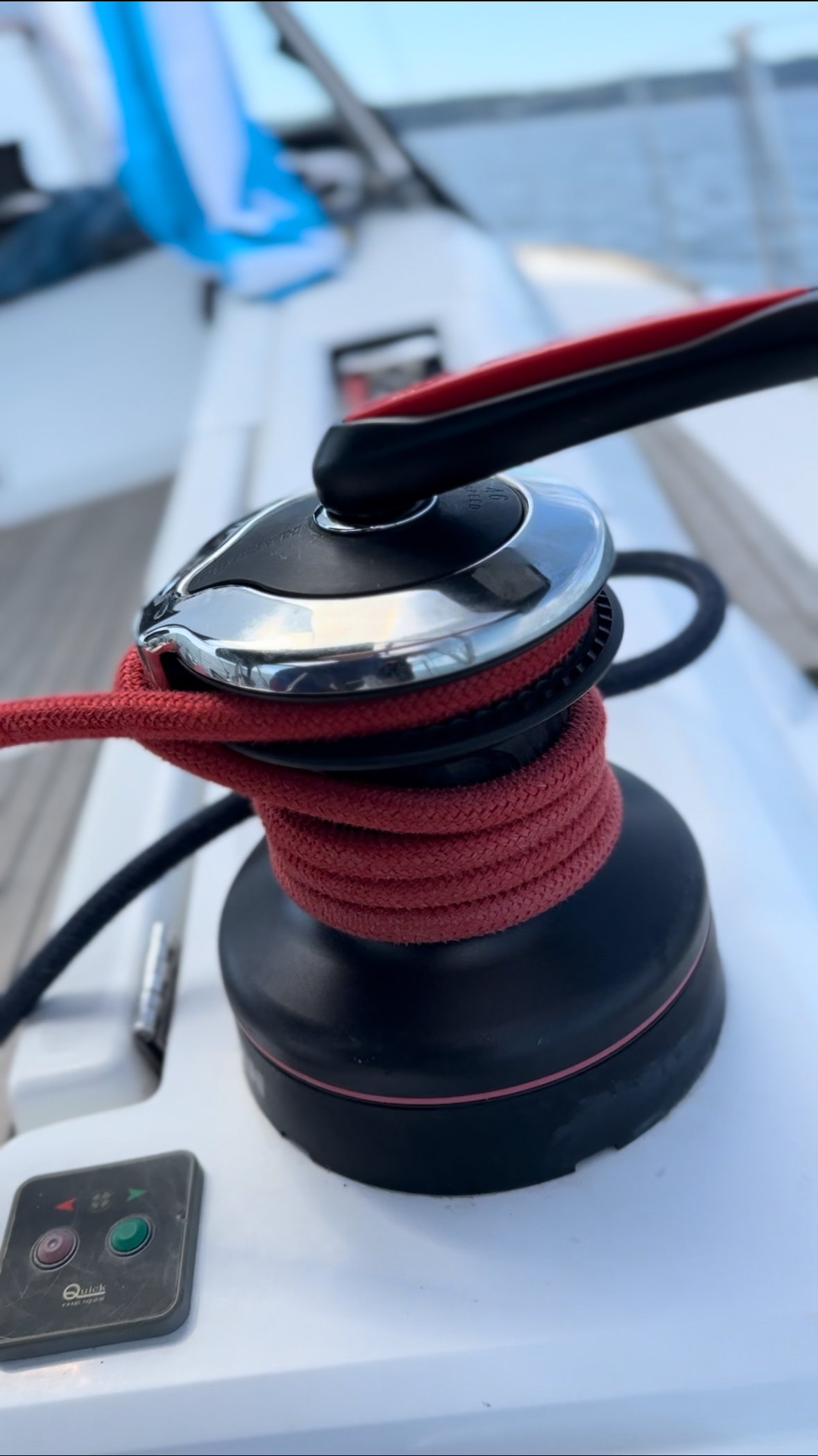Overnight Sails
Packing for the Trip
Packing can be stressful. Don’t fret, we’ve got you covered. Three quick tips:
1. Pack light (a soft carry on duffel and backpack)
2. Pack layering clothes
3. Pack extra socks (they get wet sometimes)
Stop stressing and get the full packing list.
Meals Abroad
Upper Left has a fully operational galley (kitchen) complete with a stove, oven, sink, pots & pans, and utensils. Unless you are Gordon Ramsey, whatever you make at home is likely possible here! We’ve enjoyed: Japanese sweet potato, asparagus, and salmon; corn and black bean enchiladas; and french toast and bacon. Of course the occasional sandwich and salad is enjoyable and requires very little effort. Meal prep and clean up responsibilities are typically shared among crew.
Crew Trip Expenses
Enjoying the open waters is an expensive hobby. As owners we cover the cost of owning, maintaining, and operating Upper Left. As crew, we ask you to cover voyage incidentals - provisions, moorage & marina fees, & fuel, etc. All voyage incidentals are split across the crew (excludes owners).
Departing Destination
We typically embark for overnight sails from Shilshole Bay Marina (our home dock)
Shilshole Bay Marina | Puget Sound
Address: 7001 Seaview Ave NW #100, Seattle, WA 98117
Parking: Park in the lot just north of the main marina building. The back row (closest to the street) is guest parking. Ignore the signs that say “permit parking only” when entering the parking loe. If all guest parking is full, there is ample street parking.
Getting to the boat: We are located on “J” dock. There are big yellow letters above each dock entrance. Look for the sign that says “J” and “K”. It’s the first door just north of the main marina building. Call your host upon arrival to gain access.
Your Safety
More than having fun (which we really care about), your safety is paramount. When you board the boat we’ll conduct a safety briefing to prep you for the journey. If you remember nothing, remember these 2 things: 1. Life jackets are recommended above deck and mandatory out of the cockpit, 2. When moving about, maintain 3 points of contact with the boat.
Intro Sailing Terms
Bow
The front of the boat that comes to a “V” shape
Stern
The back end of the boat that is a rectangle shape
Port
The left side of the boat when facing forward (with a red light)
Starboard
The right side of the boat when facing forward (with a green light)
Mast
The giant vertical structure to which the mainsail is attached
Boom
The giant horizontal structure that is attached to the mast and mainsail
Mainsail
The largest sail that is attached to the mast and boom. It’s the back sail
Jib
The sail in front of the mainsail. It attaches to the bow and the mast
Tack
Turning the boat with the wind across the bow of the boat
Crew
Everyone on the boat that’s not the Captain. This is you!
Line
A line is a rope that does something, like lift the mainsail
Captain
The person in charge of the boat & your safety. If they ask you to do something, do it
What to Expect
Preparing to Cast Off
Getting ready to sail is exciting! Upon arrival, we’ll load the boat, get acquainted with all the systems, conduct a safety briefing, and cast off! Wanna know more? Read on.
Arrival: 30 minutes prior to sail time.
Loading the boat: Load personal items onto the beds (not the walkways). Don’t worry about putting everything away - we’ll organize while underway. There are dock carts to move things from the car and boat.
Safety: Once we are situated, we’ll conduct a safety briefing. This will acquaint you with the boat’s systems and how to keep yourself safe.
Prep: Disconnect shore power, check vital systems (like standing rigging), and attach dinghy to boat.
Engine: Check engine coolant, oil level, sea strainer, and belt tension. Turn on the engine battery and start the engine.
Casting off: The Captain will plan how to cast off and assign individual tasks. Once the Captain gives the commands, we’re off!
While Under Sail
There are two ways to move Upper Left: Wind and motor power. It’s likely throughout our trip we will use both (wind isn’t that reliable). Here’s what to expect:
General rule: Before moving the boat, close all hatches (windows).
Motor sailing: This is pretty straightforward. You turn on the engine, set a direction, and off you go! This is generally the calmest way to move Upper Left. It’s a great time to read, relax, and bring out the snacks!
We will always motor sail in and out of port (unless there is something majorly wrong).
Wind sailing: Once there is a enough wind to sail we’ll hoist the sails. This always seems a bit chaotic the first few times. But, it’s pretty straightforward. We’ll pull some lines, set the sails, and ride the wind.
Helping: If you are interested in helping, let us know! If you just want to relax and watch, that’s great! This is a no judgement zone.
Heeling: Heeling is when the boat is slanted to one side (the leeward side). It feels extreme @ times - it’s really not and no we won’t tip over. Just sit on the windward (highest point) of the boat and enjoy the experience.
Returning to Port
All good things come to an end. Returning to port is mostly the reverse of casting off, with some exceptions:
Prepare: 30 minutes before arrival, start packing personal belongings, collect trash, & clean boat.
Pump Out & fuel: We’ll make a pit stop to refuel and dispose of human bio waste.
Docking: The Captain will plan how to dock and assign individual tasks. Once back at the dock, the Captain will give commands.
Washing: Wash and scrub down the boat with fresh water (saltwater sucks)! Don’t forget to close all the hatches (windows)!
Reconnecting Systems: Reconnect shore power and attach dinghy to the dock.
Unload the Boat: Remove all personal belongings, trash, and other things. There are dock carts available to move things between the boat and car.
Before leaving: Turn off the engine battery, turn off all electrical switches, and ensure the auto bilge pump is on!
Locking up: Lock the companionway and say goodbye.

















